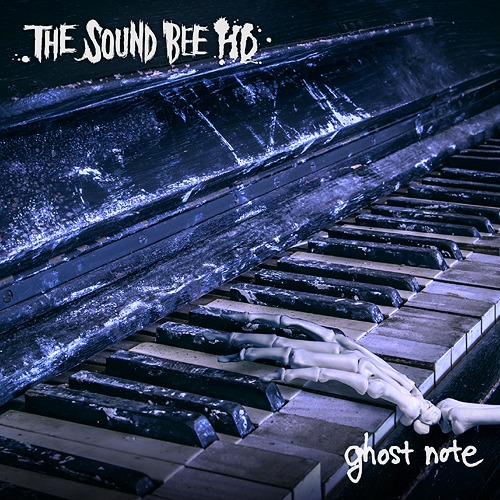
Now we’ve talked a bit about ghost strokes, how the heck do we play them? Well-again-the answer is simple in principle but a little trickier in practice. Ghost strokes may not help you if you need to create a massive moment in a big rock track, but generally speaking, it’s good to utilize them when needed. Ghost strokes create the perfect combination of energy and space. Like being hit gently and repeatedly over the head with a small rubber mallet, it could quickly become irritating at best and painful at worst!īy making some of the snare notes into ghost strokes, we retain the energy of snare independence, but we allow other instruments to take the spotlight. Playing this way could quickly become overwhelming to the listener.
#GHOSTNOTE SIMPLY PERFECT FULL#
You’d have a song that’s rammed full of notes, all competing for space. Imagine if all of the snare hits on this track were loud. They’re there, and they’re not there-all at the same time. If you listen even more closely, you’ll also hear some faint snare hits which sit underneath everything else. When you listen closely to the drum groove, you’ll hear loud hi-hat, kick drum, and snare drum notes. It all feels pretty close to tribal, and in this case, that’s a great thing! There’s not much emphasis on melody here. You’ll hear the track has a powerful rhythmic impetus from the bass, guitar, and vocal. Take a listen to Can’t Stop by Red Hot Chilli Peppers below. A ghost stroke will sit at the back of the mix and barely be perceptible to the ear, but it’ll make a big difference to the overall feel of a track. This is because listeners tend to ‘feel’ a ghost stroke rather than hear it. The truth may be a little plain, but – like many things in drumming – it’s a bit more complicated than that in reality. Simply put, a ghost stroke is just a very, very soft stroke. Despite their cool name, ghost strokes are not at all mysterious-sorry! It’s only fair to warn you: this is going to be an anti-climax. This is where ghost strokes can be essential.

This is especially true if we’re dealing with a busy arrangement that contains a bass guitar, guitar, keys, vocals, and so on. Nevertheless, if you’re playing these grooves fast, they can quickly start to feel cluttered in most genres. These types of loud, ‘busy’ grooves work well when you’re playing metal-or perhaps playing a track with a slow tempo. There are a lot of notes flying around in there. If you were going to criticize them, though, you’d maybe say they’re a little bit full-on.

They’re all reasonably lively, intricate, and interesting. Legend has it that ghost strokes are regular strokes that died and now roam the earth looking for drum kits to haunt.ĭespite their creepy name, ghost strokes are among the funkiest, grooviest techniques in all of Drum Land. This time of year was made for spooky stories – I watched one play out on Netflix just last night – so it seems fitting that we’re covering ghost strokes today. The coolest name for any technique on any instrument ever invented. If you click and make a purchase, I get a small commission. The Ghost Note Symphonies, Vol I finds the band reimagining some of the biggest songs of their career with intimate performances and backed with strings.Disclaimer: Links throughout the article may be affiliated.

Melodic, hardcore Rise Against follow up their eighth studio album, WOLVES, with a career spanning and genre defying release, that’s a new addition to their already storied career. Lead single “The Violence” topped the Mediabase Active Rock chart and “House On Fire” is currently in the Top 10 and climbing. 1 on Billboard’s Alternative, Top Rock and Hard Rock albums charts. The follow-up album, WOLVES, debuted at No. and topped album charts in Argentina, Brazil, Canada and Germany. 1 on the Alternative, Top Rock and Hard Rock albums charts in the U.S. Random Access Memories: 10th Anniversary Edition įlying Games LOVE AGAIN (Soundtrack from the Motion Picture) Bob Marley - Tuff Gong Jamaica Pressings.


 0 kommentar(er)
0 kommentar(er)
